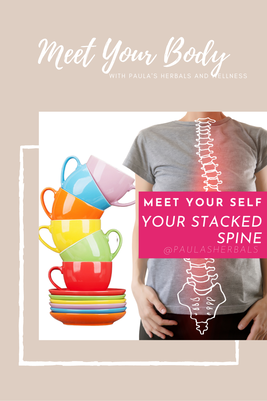 Every year I choose a word of the year (WotY) to guide me through, and I’ve realized there’s 2 indicators of success in keeping my WotY inspiring me well into the year: 1. Pick a good word- one that is broadly meaningful, not just to my current circumstances but to my bigger dreams and vision 2. Keep the WotY displayed prominently, so it remains part of my weekly ‘groove’ past February or Marc Now that I’ve done my New Year’s planning, I also spent some time considering 2021’s WotY. This is a practice I’ve done for almost a decade, and for the first time I have to try something new- TWO WotYs. Yikes! My first WotY is CONNECTION. I’m naturally an introvert, and for years and years I maxed out my ‘people time’ by teaching my pilates classes. They’re fun, rewarding, and a lovely group of people, but I didn’t have much bandwidth leftover for anything else. Over the last few years I’ve been scaling back, and the pandemic prompted me to return to the studio this summer with a positively tiny class schedule. While this gave me plenty of time to minimize any potential spread at pilates (we’ve not had any, thank all the things), it also gave me time to REST, for the first time in my adult life. That’s not an exaggeration. So now, as we step into both the great unknown of a pandemic winter and our new, ongoing normal, I’m ready and eager to explore connections. It’s a big word, with big implications, and I’m excited to see where it leads. When I was thinking through the potential of a connection, I considered that it doesn’t have to be a two-way thing, or even an external thing. Years ago I read a blog post that taught me a new word and I haven’t been able to shake the memory of this, especially when I was thinking through my WotY. It’s a French word, Flâner, and it means “to wander aimlessly, randomly, for the pleasure of watching.” I’m familiar with this idea, because as a child I could either wander or read. I lived far from anything, including people, and I spent a lot of time just looking at my little slice of the world. (I wrote about this in a blog post once.) I want to re-learn this skill, in nature as well as among people. FLÂNER is my second WotY for 2021. This pair of WotYs is setting me up for a BIG year. But 2021 is also a “big” year, culturally, for birthdays and I’m ready to leave what’s typically considered the first half of my life with this kind of energy- Connections and the ability to Flâner. These are the parts of me I’d like to nourish in my second half.
0 Comments
Life is like a… no. That’s not right.
Your spine is like a stack of teacups. There, that’s the one! Think I’m just being silly? Well, that's entirely possible but look at it this way: Your vertebrae (that’s the name of your spine bones) have flat surfaces, so they stack together. And they have padding between them, so the edges don’t chip. And they have handles, for attaching things to so they make it safely to where they’re going. Just like teacups. Now imagine carrying a stack of 33 teacups. That would be quite the feat, wouldn’t it?? All wobbly and unbalanced and shifting… it’s a terrifying thought for someone as not-graceful as me! You know those sets of cables that anchor telephone poles into the ground? (As an aside, now that they don’t carry telephone wires, what do we call them?) There’s usually two cables, coming off in a V-shape, held in the ground by the biggest metal tent peg you’ve ever seen. Maybe these cables have something to do with electrical grounding, I don’t know. But they definitely help with stability of those poles- and now apply that to your spine. Each vertebra has one or two bits of bone that look like wings, and they’re there for muscles to attach! Go figure. So all along your spine, right up against the spine bones themselves, are bits of muscles connecting the vertebrae with little V-shaped buttressing. They act like little fingers, holding the vertebrae together and allowing them to bend a bit, and also helping bring them back upright too. Ohhhhhhh, your back muscles say. We don’t have any of them! ::ouch:: But really, you do. Yours might just be tired and tiny and overtaxed, from constantly fighting poor posture and gravity and “tech neck” and scoop-shaped car seats and everything else we do to ourselves. And here’s the key- it takes tiny movements to work tiny muscles. A big move, like a forward bend or a deadlift or a burpee, really hammers the big muscles in your torso and limbs. But the little adjustments you make in yoga, the incremental relaxation you get in a float tank, the itty bitty shifts you unconsciously make when you walk on texture instead of smooth, even, flat surfaces- that’s where you start getting movement and love into those tiny spine muscles. So do your inner teacups a favor and slow down, change things up, rest a bit more, and see how that feels in your spine.  So you’ve got pain, and you want to try “natural” stuff instead of a pill. Let’s talk about this! I’m your friendly online herbalist, here to share my perspective- and that’s the first important part. Both plants and people are complicated, so the sooner you shift from the idea that you can “use” plants to the idea that you “work with” them, the easier this will go for everyone. The idea that we can "use" herbal medicine in place of OTC (over the counter) stuff isn't exactly a mistake people make, though. We've gotten the expectation of "use" in an exploitative sense ingrained in our culture from generations of being told that someone or something else will fix it for us. Please don't get me wrong- there are definitely times when someone or something else can and should! I was an EMT and believe me, I don't dismiss Western medicine out of hand. What I do believe is that there's still lots and lots of health and healing that we as individuals simply ARE in charge of, and responsible for. This is a radical idea if you think it through, because most of the messaging we get is that we're absolutely not, and it's why I say it's not a "mistake" to think it. It's a challenge to shift your thinking, especially when you can't quite see the whole new picture simply because of its newness. So I'm asking you to practice this tiny step, and see where it leads you. When you start considering an herbal remedy, actively substitute "work with" every time your brain automatically says "use". That's all! Now, on to the main event- pain and herbs.  When you take an OTC pain reliever, it does its thing by (this is the EZ Bake oven simplified version!) binding to pain receptors and blocking their messages. This feels better, but can have some unfortunate side effects- for example, if you can’t feel the pain, you might not realize that you’re causing more damage. Or, in the case of NSAIDS, even though they do decrease inflammation, they’re simultaneously causing microperforations in the gut lining which increases your inflammation and can cause that upset stomach feeling many people get. The first thing I want to say is that OTC is not evil. It is perfectly fine to reach for them when you need or want, just be aware of what else is going on! And some plants work the same way, binding with pain receptors, so the OTC actions aren’t inherently ‘wrong’ either, and working with plants isn’t inherently ‘right’. Let’s talk options. I’ve got a few specific suggestions for you below, and I want to ask you to keep a question in mind- what’s the common denominator between working with the following plants? OK, let’s say you’ve got the pain, and you know the only thing that will shake it is the NSAID- this is a familiar pattern in your life, and you just put up with the digestive discomfort. But we can help that! The herb Meadowsweet can help heal the microperforations even as the NSAIDS are causing them, relieving the stomach upset. So keep a bottle of Meadowsweet tincture next to the OTC bottle, and you’ve got this. I get my Meadowsweet from Avena Botanicals, and there are many other fine herbal makers out there as well. One dropper (a squeeze to the bulb on top fills the dropper about half way, this is what we want) by mouth when you take the NSAIDS. As a bonus, Meadowsweet has its own pain relieving parts like salicylic acid, so it’ll add to the pain relief you feel.  Next, let’s say you know you’ve got pain from some inflammation. Maybe it’s arthritis, maybe it’s a recent injury that’s swollen up, maybe you’ve eaten something that your body is reacting to, maybe it’s even allergies. Regardless, you recognize there’s inflammation from some source, and now you want to calm the source down so you don’t have the inflammation in the first place. Great! Treating the root causes is a favorite theme in herbalism. First, and I can’t stress this enough, you’ve got to look at your long-term inputs. Taking care with what you choose to put into your body will reduce the inflammation load your body has to deal with. This way, when something else comes up that causes inflammation, you’ve got more resources at your disposal to help it.  A diet and a lifestyle that actively reduces inflammation is paramount. It’s simply not fair to expect a plant to take more responsibility for your life than you do! Nutrient density, phytocompounds from all the brightly colored fruits and veg, fermented foods, quality macro and micronutrients, adequate hydration- they’re all important. It helps to take a hot second and understand that inflammation is not only a normal process in the body, but a helpful one. Your body is essentially mounting an immune response to overcome a perceived threat, and sometimes that response is out of proportion and/or won’t shut off like it’s supposed to. This is when inflammation becomes a “problem”, and when the rest of your choices can support a more appropriate response. This is also a good time to bring up the concept of a ‘health team’. If you’re not equipped to do all this on your own, working with a good nutritionist, dietician, and/or a food based therapist might be perfect for you.  Now, in the short term, you’ve got a headache or arthritis or a twisted ankle- what can you do? Turmeric is classic with aches and pains, and indeed it’s very helpful. It acts similarly to a steroid, bringing down inflammation systemically, and can be ingested easily as a regular food for regular support- IF you take a tiny bit of care when cooking with it. Here’s a study showing that Turmeric’s solubility in water increased 12x when it was heated, and another that its bioavailbility (how well we humans can absorb and use it) increased by 2,000% when mixed with black pepper. Historically it’s also always been cooked with a fat and is considered fat soluble. Moral of the story- cook Turmeric with black pepper and a bit of fat (including milk) for the best effects, and do it daily! I sneak Turmeric into anything long-cooking like tomato sauces and stews, which I make frequently. The recently-popular Golden Milk recipes you can find all over the internet are tasty too, and check all the boxes for increasing efficacy. Ginger is also helpful with pain, though this might be surprising if you think of Ginger as hot and fiery, like the inflammation is. However, spices like Ginger and Peppers increase circulation with their heat, and this can bring inflammation down by either speeding up the healing process the inflammation is trying to accomplish, or by moving more fluid through a site and washing away the pro-inflammation signals and delivering the end-inflammation ones that were stuck in the traffic jam caused by swelling. You can work with Ginger internally (it’s yummy in a lot of the same places Turmeric is, and also on its own), and you can work with it topically too. For example, you grate it onto a cloth so the juice soaks in, and place this poultice (simply a wet, topical application of plants) right on an area of the skin that needs more circulation. You can do the same with Turmeric but be aware the skin will stain yellow, and the oils in Peppers are typically too strong for topical use. Another problem I want to bring up is topical nerve pain. St. John’s Wort infused in oil, like this one from Barefoot Botanicals, is a good choice. SJW will help heal the nerves that are on and near the surface of your skin- mostly, in my experience, this happens with back injuries either at the site or down a nerve pathway along a leg. So here’s the not-a-quick-fix-or-magic-pill part. Look back at the Meadowsweet, Turmeric, Ginger, and SJW descriptions. They all address the general symptom of “pain” from their own specific directions. Meadowsweet counteracts NSAID side effects, Turmeric blocks inflammation systemically, Ginger increases circulation, SJW calms and repairs nerve endings. This is important.
There’s never a “best herb for [fill in your complaint]”. There’s only how the plant interacts with us, and whether we can work with both the plant actions and our responses to them to impact what we’re trying to do. Look at it this way- pharmaceuticals get in the driver’s seat and steer the bus for us- and sometimes that’s great, that’s perfect, that’s exactly what we need. On the other hand, plants are like good friends or therapists, nudging and guiding and helping us get where we want to be but without forcing us. The beauty is that, as humans, we’re responsible for choosing among these methods, separately or combined.
 First, the background is that many of my new Pelvic Floor (PF) clients are new to the issues they’re now dealing with, but when we take a slightly closer look it’s clear that they’re really not “NEW”. Lots of us have been pretty borderline with regards to PF problems, and have been managing to get by until this year. This is what ‘borderline’ PF problems might have looked like pre-pandemic:
And now we've been sitting exponentially more this year, plus many people have done this without much planning and finding that the home office setups aren’t as ergonomic as the in-office ones. This is what I’m seeing more and more lately:
 Yes, I teach a pelvic health program. But I’m not just talking about this phenomenon because I’m taking new clients. I’m talking about this so that you realize- YOU DON’T HAVE TO LIVE WITH THESE ISSUES And I might not be the right person for you- I get that. You might be better served by a different pelvic floor coach, or an acupuncturist, or a pelvic floor physical therapist, or medication, or different combos of these. There is no single answer for everyone and you’re not only allowed to assemble your own wellness team, you’re actually responsible for doing that. Whether or not you specifically work with me is not as important to me as you getting the help you need. Yes, I’m running a business and would like more clients. But I’m running this business because I can’t not help people feel better, this is what I have to do. So let me know if you’re experiencing any of the issues I’m seeing, and let’s talk about how to reverse them. I can help refer you to other practitioners, or talk about my private and small group programs if you like how I teach. But let’s stop your living with these issues, OK? What's the easiest Next Step(tm)? Join my free 5 day Walk This Way Challenge! |
Fun Fact: I'm an herbalist and a movement coach. Not a doctor, or a pharmacist, and not pretending to be one on TV.
This is a public space, so my writing reflects my experiences and I try to stay general enough so it might relate to you. This does not constitute medical advice, and I encourage you to discuss concerns with your doctor. Remember, however, that the final say in your wellness decisions are always yours- you have the power to choose, you are the boss of you. And, some of my posts may contain affiliate links. If you make a purchase through them I'll earn a few cents. Thank you for supporting my work. This website is provided for educational and informational purposes only and is not medical, mental health or healthcare advice. The information presented here is not intended to diagnose, treat, heal, cure or prevent any illness, medical condition or mental or emotional condition. Working with us is not a guarantee of any results. Paula Billig owns all copyrights to the materials presented here unless otherwise noted. Categories
All
Archives
July 2021
|
|
info @paulaswellness.com |
DisclaimerThis website is provided for educational and informational purposes only and is not medical, mental health or healthcare advice. The information presented here is not intended to diagnose, treat, heal, cure or prevent any illness, medical condition or mental or emotional condition. Working with us is not a guarantee of any results. Paula Billig owns all copyrights to the materials presented here unless otherwise noted. |







 RSS Feed
RSS Feed

